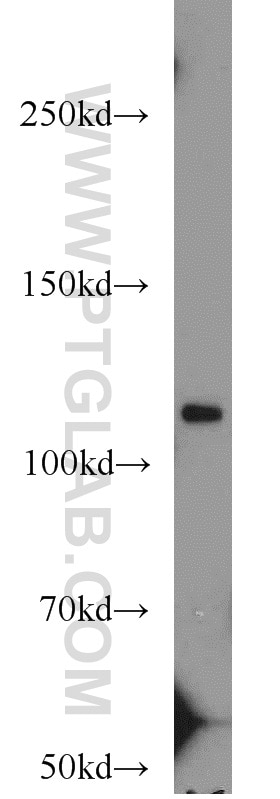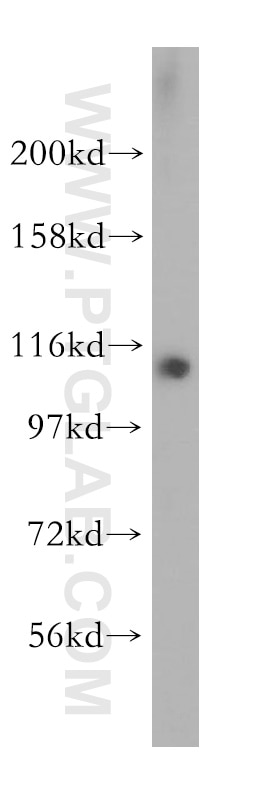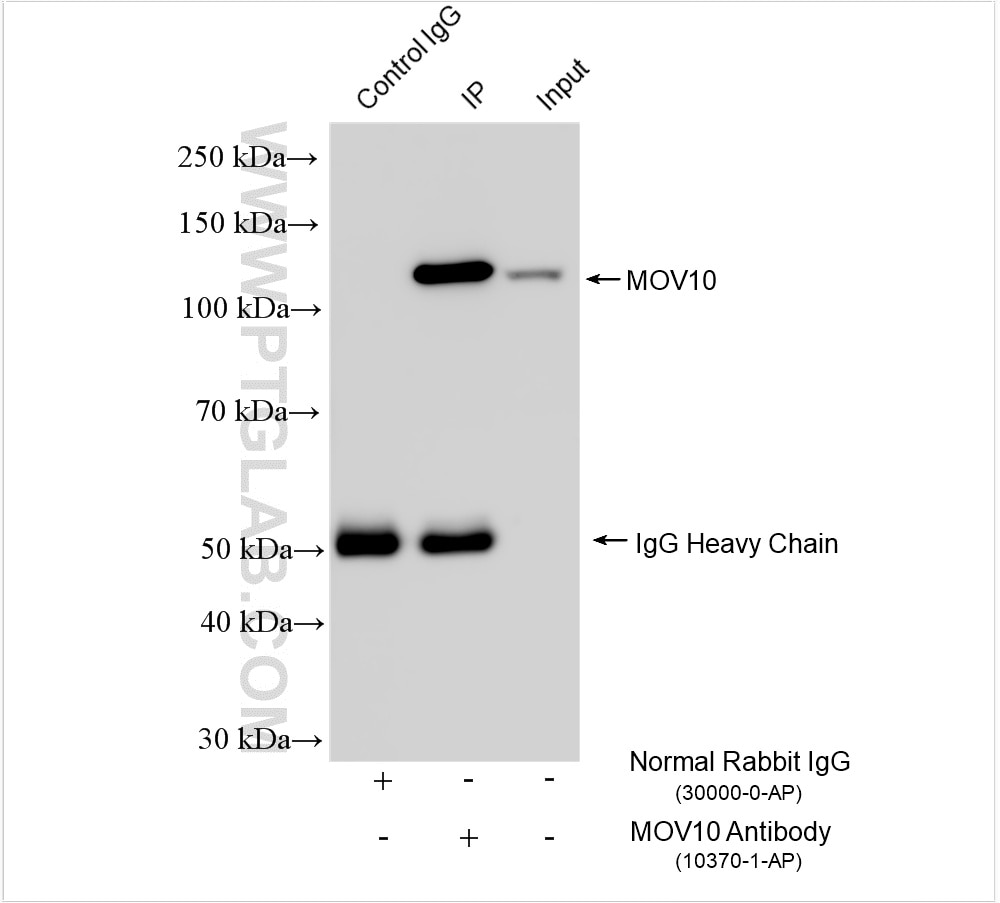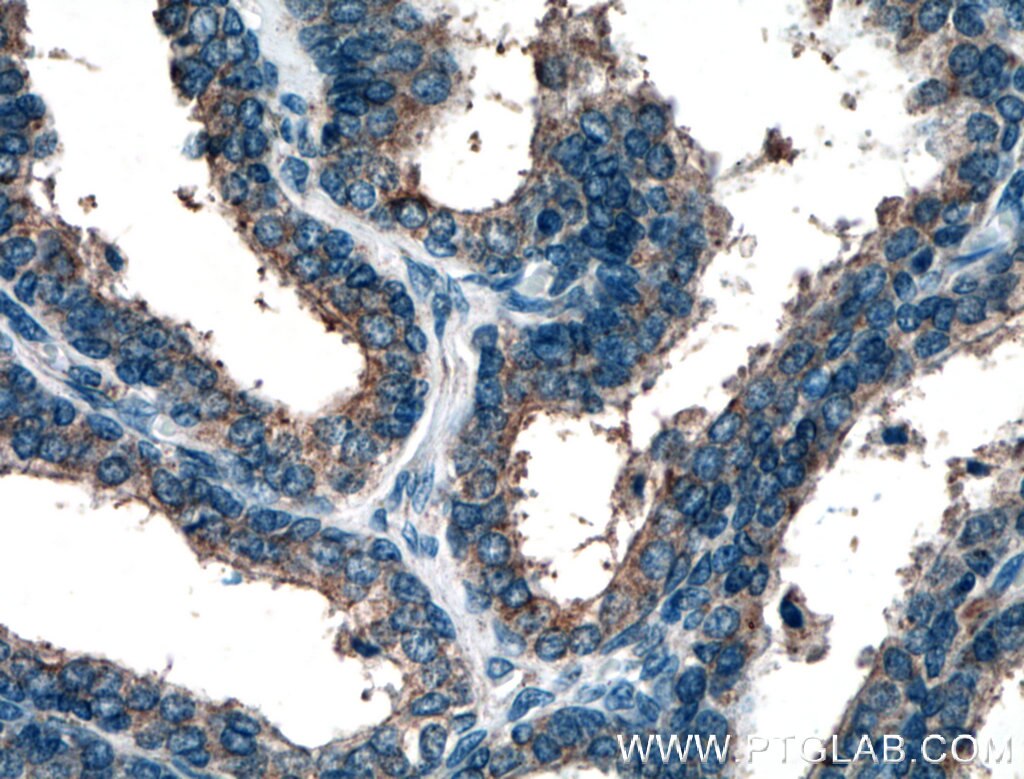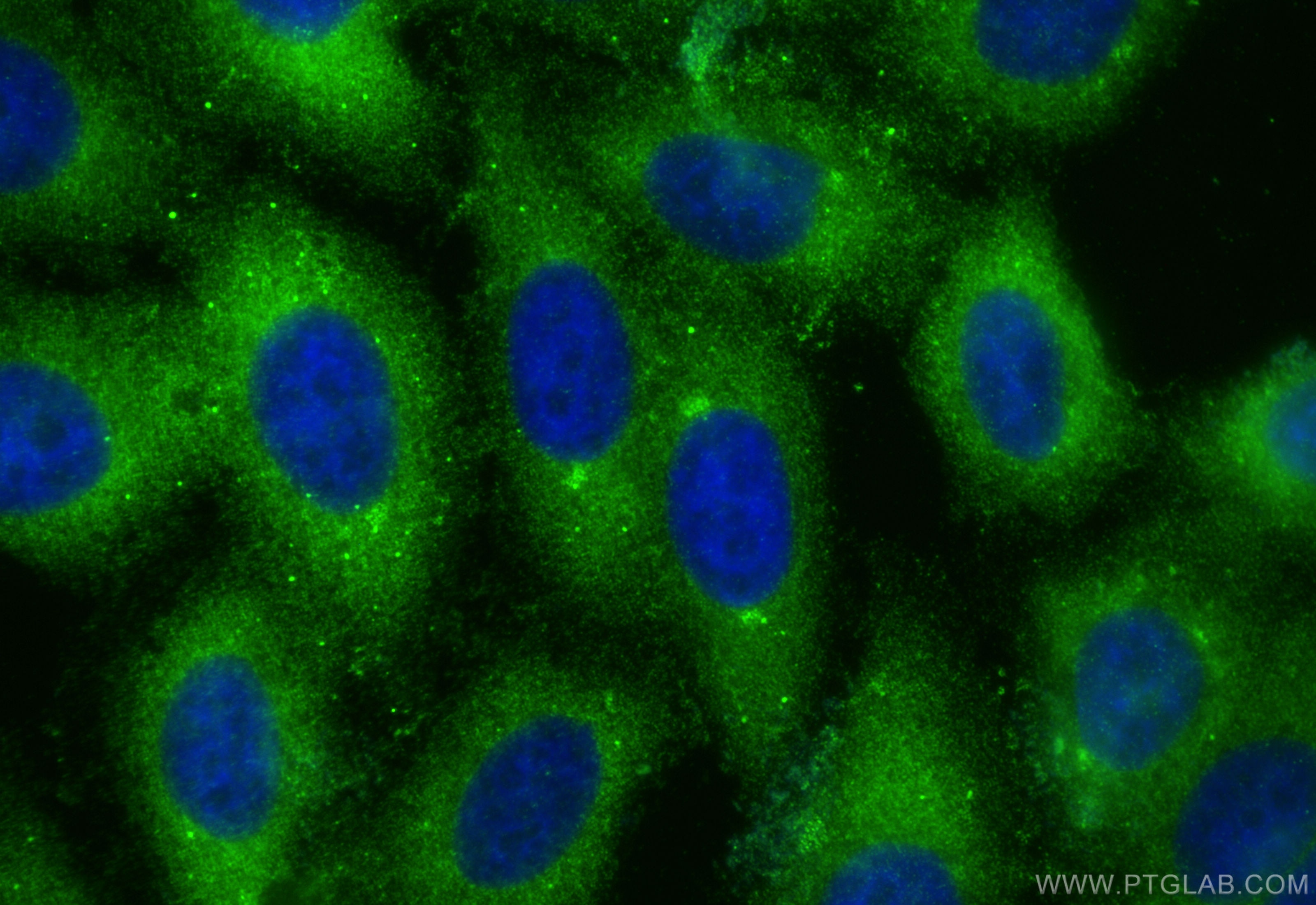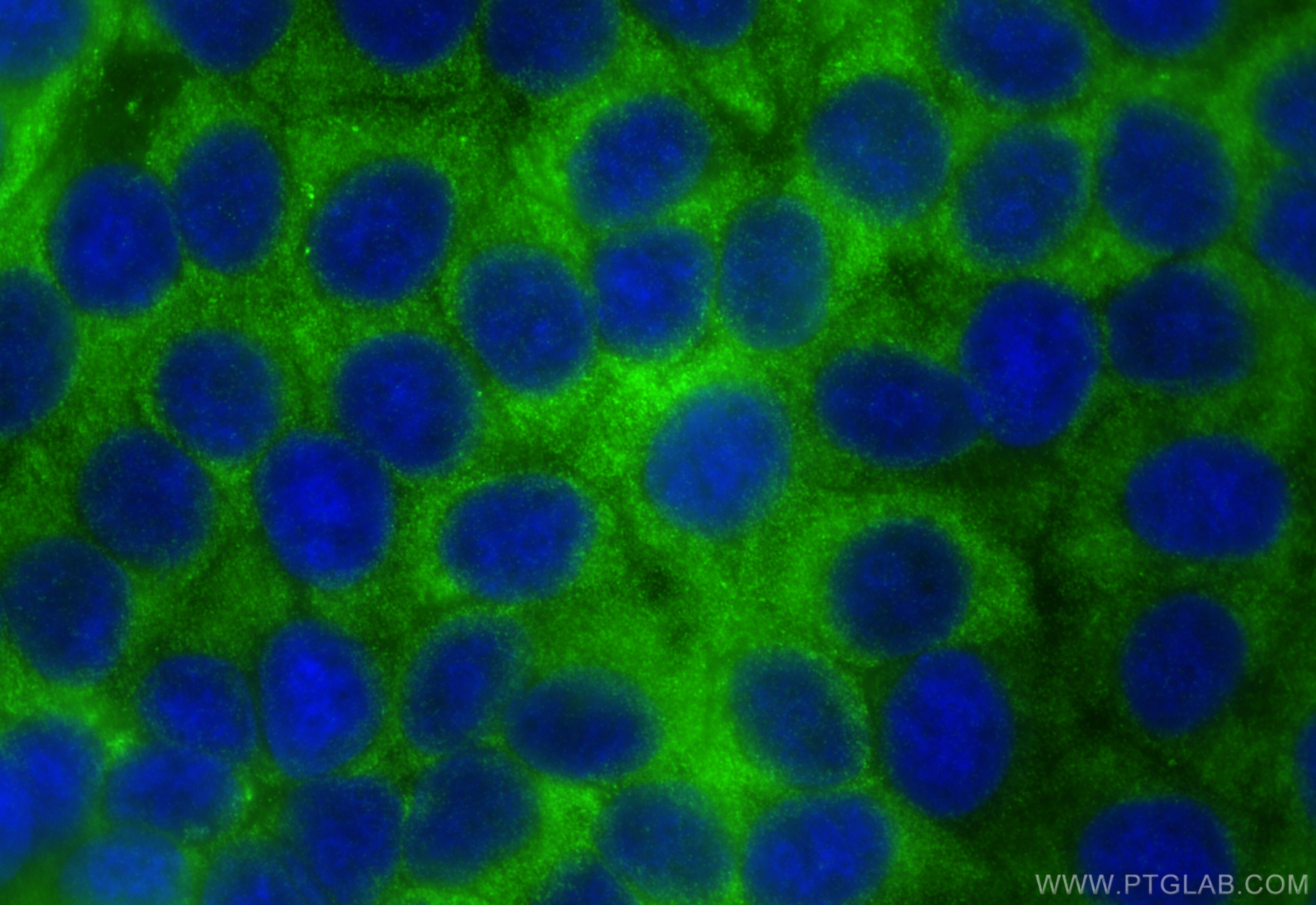- Phare
- Validé par KD/KO
Anticorps Polyclonal de lapin anti-MOV10
MOV10 Polyclonal Antibody for WB, IHC, IF/ICC, IP, ELISA
Hôte / Isotype
Lapin / IgG
Réactivité testée
Humain, rat, souris
Applications
WB, IHC, IF/ICC, IP, CoIP, RIP, ELISA
Conjugaison
Non conjugué
N° de cat : 10370-1-AP
Synonymes
Galerie de données de validation
Applications testées
| Résultats positifs en WB | cellules HEK-293, cellules HeLa, cellules HepG2, cellules MCF-7, tissu hépatique de rat, tissu hépatique de souris, tissu hépatique humain |
| Résultats positifs en IP | cellules HepG2, |
| Résultats positifs en IHC | tissu d'hyperplasie de la prostate humain, il est suggéré de démasquer l'antigène avec un tampon de TE buffer pH 9.0; (*) À défaut, 'le démasquage de l'antigène peut être 'effectué avec un tampon citrate pH 6,0. |
| Résultats positifs en IF/ICC | cellules HepG2, cellules MCF-7 |
Dilution recommandée
| Application | Dilution |
|---|---|
| Western Blot (WB) | WB : 1:2000-1:16000 |
| Immunoprécipitation (IP) | IP : 0.5-4.0 ug for 1.0-3.0 mg of total protein lysate |
| Immunohistochimie (IHC) | IHC : 1:50-1:500 |
| Immunofluorescence (IF)/ICC | IF/ICC : 1:50-1:500 |
| It is recommended that this reagent should be titrated in each testing system to obtain optimal results. | |
| Sample-dependent, check data in validation data gallery | |
Informations sur le produit
10370-1-AP cible MOV10 dans les applications de WB, IHC, IF/ICC, IP, CoIP, RIP, ELISA et montre une réactivité avec des échantillons Humain, rat, souris
| Réactivité | Humain, rat, souris |
| Réactivité citée | Humain, souris |
| Hôte / Isotype | Lapin / IgG |
| Clonalité | Polyclonal |
| Type | Anticorps |
| Immunogène | MOV10 Protéine recombinante Ag0384 |
| Nom complet | Mov10, Moloney leukemia virus 10, homolog (mouse) |
| Masse moléculaire calculée | 114 kDa |
| Poids moléculaire observé | 110-115 kDa |
| Numéro d’acquisition GenBank | BC002548 |
| Symbole du gène | MOV10 |
| Identification du gène (NCBI) | 4343 |
| Conjugaison | Non conjugué |
| Forme | Liquide |
| Méthode de purification | Purification par affinité contre l'antigène |
| Tampon de stockage | PBS with 0.02% sodium azide and 50% glycerol |
| Conditions de stockage | Stocker à -20°C. Stable pendant un an après l'expédition. L'aliquotage n'est pas nécessaire pour le stockage à -20oC Les 20ul contiennent 0,1% de BSA. |
Informations générales
MOV10, also named as KIAA1631, belongs to the DNA2/NAM7 helicase family and SDE3 subfamily. It is required for RNA-mediated gene silencing by the RNA-induced silencing complex (RISC). Human MOV10 may regulate a wide range of RNA viruses and could also control the retrotransposition of endogenous retroelements in mammals(PMID:22727223). MOV10 has a broad antiretroviral activity that can target a wide range of retroviruses, and it could be actively involved in host defense against retroviral infection. MOV10 can potently inhibit HIV-1 replication at multiple stages(PMID:20215113). It is involved in the progression of telomerase-catalyzing reaction via the interaction of telomerase protein and telomere DNA.
Protocole
| Product Specific Protocols | |
|---|---|
| WB protocol for MOV10 antibody 10370-1-AP | Download protocol |
| IHC protocol for MOV10 antibody 10370-1-AP | Download protocol |
| IF protocol for MOV10 antibody 10370-1-AP | Download protocol |
| IP protocol for MOV10 antibody 10370-1-AP | Download protocol |
| Standard Protocols | |
|---|---|
| Click here to view our Standard Protocols |
Publications
| Species | Application | Title |
|---|---|---|
Neuron A coordinated local translational control point at the synapse involving relief from silencing and MOV10 degradation. | ||
Mol Cell Multivalent Proteins Rapidly and Reversibly Phase-Separate upon Osmotic Cell Volume Change. | ||
Mol Cell MOV10 Is a 5' to 3' RNA helicase contributing to UPF1 mRNA target degradation by translocation along 3' UTRs.
| ||
Nat Struct Mol Biol Capped small RNAs and MOV10 in human hepatitis delta virus replication.
| ||
PLoS Pathog APOBEC3G and APOBEC3F require an endogenous cofactor to block HIV-1 replication. |

